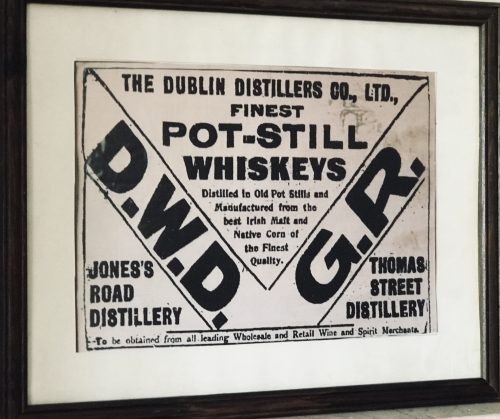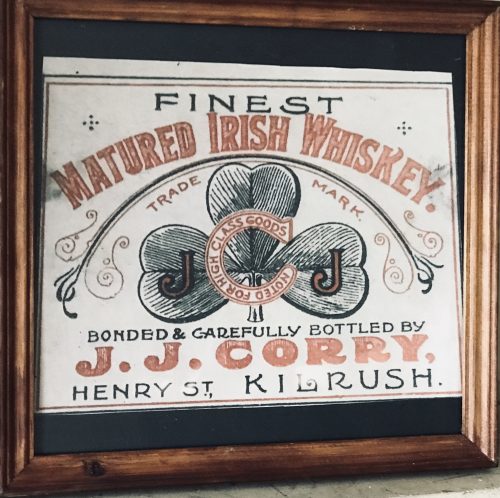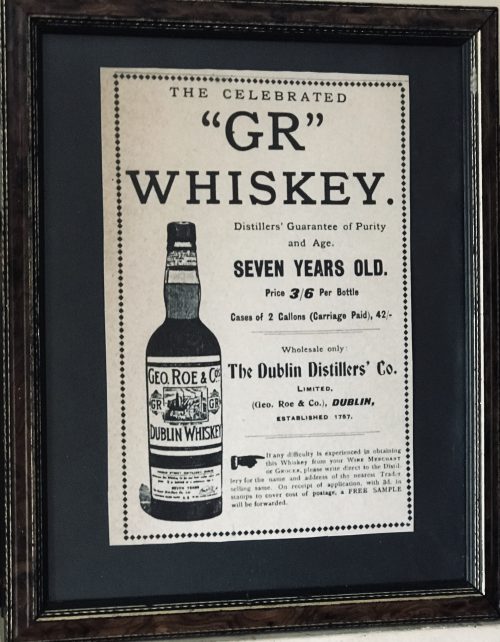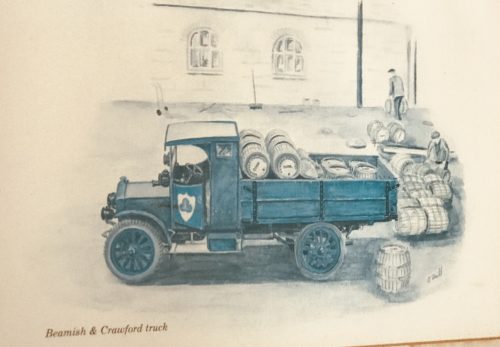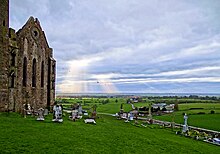Superb vintage poster advertising the famous WW1 era music hall song of 'Its a long long way to Tipperary".
60cm x 45cm London United Kingdom
Long Way to Tipperary" (or "
It's a Long, Long Way to Tipperary") is a British
music hall song first performed in 1912 by
Jack Judge, and written by Judge and Harry Williams though authorship of the song has long been disputed.
It was recorded in 1914 by Irish tenor
John McCormack. It became popular as a
marching song among soldiers in the
First World War and is remembered as
a song of that war. Welcoming signs in the referenced county of
Tipperary, Ireland, humorously declare, "You've come a long long way..." in reference to the song.
Authorship
Jack Judge's parents were Irish, and his grandparents came from
Tipperary. Judge met Harry Williams (Henry James Williams, 23 September 1873 – 21 February 1924) in
Oldbury, Worcestershire at the Malt Shovel public house, where Williams's brother Ben was the licensee. Williams was severely disabled, having fallen down cellar steps as a child and badly broken both legs. He had developed a talent for writing verse and songs, and played the piano and
mandolin, often in public. Judge and Williams began a long-term writing partnership that resulted in 32 music hall songs published by
Bert Feldman. Many of the songs were composed by Williams and Judge at Williams's home, The Plough Inn (later renamed The Tipperary Inn), in
Balsall Common. Because Judge could not read or write music, Williams taught them to Judge by ear.
Judge was a popular semi-professional performer in music halls. In January 1912, he was performing at the Grand Theatre in
Stalybridge, and accepted a 5-
shilling bet that he could compose and sing a new song by the next night. The following evening, 31 January, Judge performed "It's a Long Way to Tipperary" for the first time, and it immediately became a great success. The song was originally written and performed as a sentimental ballad, to be enjoyed by Irish expatriates living in London.
Judge sold the rights to the song to Bert Feldman in London, who agreed to publish it and other songs written by Judge with Williams.
Feldman published the song as "It's a Long, Long Way to Tipperary" in October 1912, and promoted it as a
march.
Dispute
Feldman paid royalties to both Judge and Williams, but after Williams' death in 1924, Judge claimed sole credit for writing the song,
saying that he had agreed to Williams being co-credited as recompense for a debt that Judge owed. However, Williams' family showed that the tune and most of the lyrics to the song already existed in the form of a manuscript, "It's A Long Way to Connemara", co-written by Williams and Judge back in 1909, and Judge had used this, just changing some words, including changing "Connemara" to "Tipperary"
Judge said: "I was the sole composer of 'Tipperary', and all other songs published in our names jointly. They were all 95% my work, as Mr Williams made only slight alterations to the work he wrote down from my singing the compositions. He would write it down on music-lined paper and play it back, then I'd work on the music a little more ... I have sworn affidavits in my possession by Bert Feldman, the late Harry Williams and myself confirming that I am the composer ...". In a 1933 interview, he added: "The words and music of the song were written in the Newmarket Tavern, Corporation Street, Stalybridge on 31st January 1912, during my engagement at the Grand Theatre after a bet had been made that a song could not be written and sung the next evening ... Harry was very good to me and used to assist me financially, and I made a promise to him that if I ever wrote a song and published it, I would put his name on the copies and share the proceeds with him. Not only did I generously fulfil that promise, but I placed his name with mine on many more of my own published contributions. During Mr Williams' lifetime (as far as I know) he never claimed to be the writer of the song ...".
Williams's family campaigned in 2012 to have Harry Williams officially re-credited with the song, and shared their archives with the
Imperial War Museums. The family estate still receives royalties from the song.
Other claims
In 1917, Alice Smyth Burton Jay sued song publishers
Chappell & Co. for $100,000, alleging she wrote the tune in 1908 for a song played at the
Alaska–Yukon–Pacific Exposition promoting the Washington apple industry. The chorus began "I'm on my way to
Yakima".
The court appointed
Victor Herbert to act as expert advisor
and dismissed the suit in 1920, since the authors of "Tipperary" had never been to
Seattle and Victor Herbert testified the two songs were not similar enough to suggest plagiarism.
Content
The song was originally written as a lament from an Irish worker in London, missing his homeland, before it became a popular soldiers' marching song. One of the most popular hits of the time, the song is atypical in that it is not a warlike song that incites the soldiers to glorious deeds. Popular songs in previous wars (such as the
Boer Wars) frequently did this. In the First World War, however, the most popular songs, like this one and "
Keep the Home Fires Burning", concentrated on the longing for home.
Reception
Feldman persuaded
Florrie Forde to perform the song in 1913, but she disliked it and dropped it from her act.
However, it became widely known. During the
First World War,
Daily Mailcorrespondent George Curnock saw the Irish regiment the
Connaught Rangers singing this song as they marched through
Boulogne on 13 August 1914, and reported it on 18 August 1914. The song was quickly picked up by other units of the
British Army. In November 1914, it was recorded by Irish tenor
John McCormack, which helped its worldwide popularity.
Other popular versions in the USA in 1915 were by the
American Quartet,
Prince's Orchestra, and Albert Farrington.
The popularity of the song among soldiers, despite (or because of) its irreverent and non-military theme, was noted at the time, and was contrasted with the military and patriotic songs favoured by enemy troops. Commentators considered that the song's appeal revealed characteristically British qualities of being cheerful in the face of hardship.
The Times suggested that "'Tipperary' may be less dignified, but it, and whatever else our soldiers may choose to sing will be dignified by their bravery, their gay patience, and their long suffering kindness... We would rather have their deeds than all the German songs in the world."
Later performances
Early recording star
Billy Murray, with the American Quartet, sang "It's A Long Way To Tipperary" as a straightforward march, complete with brass, drums and cymbals, with a quick bar of "
Rule, Britannia!" thrown into the instrumental interlude between the first and second verse-chorus combination.
The song was featured as one of the songs in the 1951 film
On Moonlight Bay, the 1960s stage musical and film
Oh! What a Lovely War and the 1970 musical
Darling Lili, sung by
Julie Andrews. It was also sung by the prisoners of war in
Jean Renoir's film
La Grande Illusion (1937) and as background music in
The Russians Are Coming, the Russians Are Coming (1966). It is also the second part (the other two being
Hanging on the Old Barbed Wire and
Mademoiselle from Armentières) of the regimental march of
Princess Patricia's Canadian Light Infantry.
Mystery Science Theater 3000 used it twice, sung by
Crow T. Robot in
Mystery Science Theater 3000: The Movie (1996), then sung again for the final television episode. It is also sung by British soldiers in the film
The Travelling Players (1975) directed by
Theo Angelopoulos, and by
Czechoslovak soldiers in the movie
Černí baroni (1992).
The song is often cited when documentary footage of the First World War is presented. One example of its use is in the annual television special
It's the Great Pumpkin, Charlie Brown (1966).
Snoopy—who fancies himself as a First World War flying ace—dances to a medley of First World War-era songs played by
Schroeder. This song is included, and at that point Snoopy falls into a left-right-left marching pace. Schroeder also played this song in
Snoopy, Come Home (1972) at Snoopy's send-off party. Also, Snoopy was seen singing the song out loud in a series of strips about his going to the
1968 Winter Olympics. In another strip, Snoopy is walking so long a distance to Tipperary that he lies down exhausted and notes, "They're right, it is a long way to Tipperary." On a different occasion, Snoopy walks along and begins to sing the song, only to meet a sign that reads, "Tipperary: One Block." In a Sunday strip wherein Snoopy, in his World War I fantasy state, walks into
Marcie's home, thinking it a French café, and falls asleep after drinking all her root beer, she rousts him awake by loudly singing the song.
It is also featured in
For Me and My Gal (1942) starring
Judy Garland and
Gene Kelly and
Gallipoli (1981) starring
Mel Gibson.
The cast of
The Mary Tyler Moore Show march off screen singing the song at the conclusion of the series’ final episode, after news anchor
Ted Baxter (played by
Ted Knight) had inexplicably recited some of the lyrics on that evening's news broadcast.
It was sung by the crew of
U-96 in
Wolfgang Petersen's 1981 film
Das Boot (that particular arrangement was performed by the
Red Army Choir). Morale is boosted in the submarine when the German crew sings the song as they begin patrolling in the North Atlantic Ocean. The crew sings it a second time as they cruise toward home port after near disaster.
When the
hellship SS Lisbon Maru was sinking, the Royal Artillery POWS trapped in the vessel are reported to have sung this song.
Survivors of the sinking of
HMS Tipperary in the
Battle of Jutland (1916) were identified by their rescuers on
HMS Sparrowhawk because they were singing "It's a Long Way to Tipperary" in their lifeboat.
In
Mystery Science Theater 3000: The Movie (1996), based on the popular cable series
Mystery Science Theater 3000, robot character Crow T. Robot sings a version of the song while wearing a World War I British Army helmet, and declaring "We must confound Gerry (the Germans) at every turn!"
Lyrics
Up to mighty London
Came an Irishman one day.
As the streets are paved with gold
Sure, everyone was gay,
Singing songs of Piccadilly,
Strand and Leicester Square,
Till Paddy got excited,
Then he shouted to them there:
Chorus
It's a long way to Tipperary,
It's a long way to go.
It's a long way to Tipperary,
To the sweetest girl I know!
Goodbye, Piccadilly,
Farewell, Leicester Square!
It's a long long way to Tipperary,
But my heart's right there.
Paddy wrote a letter
To his Irish Molly-O,
Saying, "Should you not receive it,
Write and let me know!"
"If I make mistakes in spelling,
Molly, dear," said he,
"Remember, it's the pen that's bad,
Don't lay the blame on me!"
Chorus
Molly wrote a neat reply
To Irish Paddy-O,
Saying "Mike Maloney
Wants to marry me, and so
Leave the Strand and Piccadilly
Or you'll be to blame,
For love has fairly drove me silly:
Hoping you're the same!"
Chorus
An alternative
bawdy concluding chorus:
That's the wrong way to tickle Mary,
That's the wrong way to kiss.
Don't you know that over here, lad
They like it best like this.
Hoo-ray pour les français,
Farewell Angleterre.
We didn't know how to tickle Mary,
But we learnt how over there.
 This historic brand of whiskey has now been revived by the Cooley Distillery (which is now part of Beam Suntory).The brand was previously owned by the Watt Distillery, which (according to the company) dates back to 1762. The Tyrconnell was their flagship brand, and was named after a racehorse owned by Andrew Alexander Watt. The horse was a chestnut colt that won at 100 to 1 odds in 1876 in the Irish horse race called The National Produce Stakes.The actual horse race is depicted on the label.
Tír Chonaill in the Irish Language comes from Tír meaning “Land of” and Chonaill which was the name of an ancient 5th Century High King of the North West of Ireland in the 5th century who was a son of the famous Niall of the Nine Hostages. Tyrconnell was therefore the name of this ancient North West Irish Kingdom and is still to this day used as the Irish language name of Donegal in the North West of Ireland.
Tír Chonaill would have encompassed the modern county of Donegal and much of her neighbouring counties of Sligo, Leitrim, Fermanagh and Tyrone. The Kingdom survived until 1601.
In 1876, the Donegal – Derry based Watt family who owned one of the largest whiskey distilleries in Ireland entered a racehorse called “Tyrconnell” (after the local ancient kingdom) in the Irish Classic “National Produce Stakes” where it won against all the odds at an incredible 100 to 1. This spectacular achievement inspired the Watt whiskey distillery in Derry to celebrate the occasion with a special commemorative Tyrconnell Irish whiskey label. The Tyrconnell was, before American prohibition, one of the biggest selling whiskey brands in the United States. Pre-prohibition photos taken in Yankee Stadium in New York show Tyrconnell Irish Whiskey billboards in positions of prominence at the venue. All three of the company’s whiskey brands enjoyed great success in the export sector. Sales in England, Canada, Australia, Nigeria and the West Indies and the U.S. put Derry on the commercial map as never before. Unfortunately, with the decline of Irish Whiskey after prohibition, Watts distillery and Tyrconnell whiskey faded and died like the majority of Irish whiskey distilleries and brands of the time.
When the Cooley Irish Whiskey Distillery was recommissioned by Dr. John Teeling a few years ago, Tyrconnell was one of the old iconic Irish whiskey brands that Cooley brought back to life. Cooley Distillery and the Cooley Irish Whiskey brands are now owned by the Japanese – American whiskey giant Beam Suntory. Today, Tyrconnell whiskey is available as a standard 10 Year Old Cooley Single Malt and is also available through the Tyrconnell Irish Whiskey Finishes Collection in Port Pipe, Madeira Cask and Sherry Butt finishes at 46% abv as well as a 15 Year Old Single Cask expression.
Andrew Watt (4 November 1853 – 11 October 1928) was an Anglo-Irish businessman with a net worth of over £900,000 at his death in 1928, worth £51.8 million in 2016.He was born in 1853 to Samuel Watt of Thornhill and his wife Jane Newman, daughter of Captain Robert Newman, R.N.. He was educated at Foyle College and then at home by tutors. His family were gentry who had arrived at Claragh in County Donegal during one of the Ulster Plantations.He was the owner of Watt’s Distillery, one of the largest distilleries in Ireland, and the creator of many whiskies including the famous Tyrconnell,which he named after his racehorse that won the National Produce Stakes against the odds of 100 to 1.
During industrial unrest of 1921, brought about by prohibition in the United States and the First World War, Watt’s workers at the distillery were made redundant after challenging his authority. Watt is said to have stood on a barrel outside the gates to his distillery in Bogside, whilst the workers were on strike, and shouted, ‘Well men, I shall put it to you like this …what is it to be? Will you open the gates?’ To which the workers retorted, ‘The gates stay shut!’ This prompted Watt to reply, ‘Shut they are, and shut they shall remain!’ Watt subsequently closed down the distillery at great economic expense.
On 7 October 1895, he married Violet Flora de Burgh, daughter of George de Burgh and Constance Matthews, with whom he had 4 sons and 2 daughters.He served as High Sheriff of County Londonderry from 1886 to 1887.He was a member of Boodle’s. He died at Easton Hall, where he lived in England after he left Ireland.
Below is an additional and very interesting article from the Derry Historical Journal chronicling the rise and fall, like so many other Irish Whiskey distilleries, of the once all conquering Watts “Tyrconnell” brand.
This historic brand of whiskey has now been revived by the Cooley Distillery (which is now part of Beam Suntory).The brand was previously owned by the Watt Distillery, which (according to the company) dates back to 1762. The Tyrconnell was their flagship brand, and was named after a racehorse owned by Andrew Alexander Watt. The horse was a chestnut colt that won at 100 to 1 odds in 1876 in the Irish horse race called The National Produce Stakes.The actual horse race is depicted on the label.
Tír Chonaill in the Irish Language comes from Tír meaning “Land of” and Chonaill which was the name of an ancient 5th Century High King of the North West of Ireland in the 5th century who was a son of the famous Niall of the Nine Hostages. Tyrconnell was therefore the name of this ancient North West Irish Kingdom and is still to this day used as the Irish language name of Donegal in the North West of Ireland.
Tír Chonaill would have encompassed the modern county of Donegal and much of her neighbouring counties of Sligo, Leitrim, Fermanagh and Tyrone. The Kingdom survived until 1601.
In 1876, the Donegal – Derry based Watt family who owned one of the largest whiskey distilleries in Ireland entered a racehorse called “Tyrconnell” (after the local ancient kingdom) in the Irish Classic “National Produce Stakes” where it won against all the odds at an incredible 100 to 1. This spectacular achievement inspired the Watt whiskey distillery in Derry to celebrate the occasion with a special commemorative Tyrconnell Irish whiskey label. The Tyrconnell was, before American prohibition, one of the biggest selling whiskey brands in the United States. Pre-prohibition photos taken in Yankee Stadium in New York show Tyrconnell Irish Whiskey billboards in positions of prominence at the venue. All three of the company’s whiskey brands enjoyed great success in the export sector. Sales in England, Canada, Australia, Nigeria and the West Indies and the U.S. put Derry on the commercial map as never before. Unfortunately, with the decline of Irish Whiskey after prohibition, Watts distillery and Tyrconnell whiskey faded and died like the majority of Irish whiskey distilleries and brands of the time.
When the Cooley Irish Whiskey Distillery was recommissioned by Dr. John Teeling a few years ago, Tyrconnell was one of the old iconic Irish whiskey brands that Cooley brought back to life. Cooley Distillery and the Cooley Irish Whiskey brands are now owned by the Japanese – American whiskey giant Beam Suntory. Today, Tyrconnell whiskey is available as a standard 10 Year Old Cooley Single Malt and is also available through the Tyrconnell Irish Whiskey Finishes Collection in Port Pipe, Madeira Cask and Sherry Butt finishes at 46% abv as well as a 15 Year Old Single Cask expression.
Andrew Watt (4 November 1853 – 11 October 1928) was an Anglo-Irish businessman with a net worth of over £900,000 at his death in 1928, worth £51.8 million in 2016.He was born in 1853 to Samuel Watt of Thornhill and his wife Jane Newman, daughter of Captain Robert Newman, R.N.. He was educated at Foyle College and then at home by tutors. His family were gentry who had arrived at Claragh in County Donegal during one of the Ulster Plantations.He was the owner of Watt’s Distillery, one of the largest distilleries in Ireland, and the creator of many whiskies including the famous Tyrconnell,which he named after his racehorse that won the National Produce Stakes against the odds of 100 to 1.
During industrial unrest of 1921, brought about by prohibition in the United States and the First World War, Watt’s workers at the distillery were made redundant after challenging his authority. Watt is said to have stood on a barrel outside the gates to his distillery in Bogside, whilst the workers were on strike, and shouted, ‘Well men, I shall put it to you like this …what is it to be? Will you open the gates?’ To which the workers retorted, ‘The gates stay shut!’ This prompted Watt to reply, ‘Shut they are, and shut they shall remain!’ Watt subsequently closed down the distillery at great economic expense.
On 7 October 1895, he married Violet Flora de Burgh, daughter of George de Burgh and Constance Matthews, with whom he had 4 sons and 2 daughters.He served as High Sheriff of County Londonderry from 1886 to 1887.He was a member of Boodle’s. He died at Easton Hall, where he lived in England after he left Ireland.
Below is an additional and very interesting article from the Derry Historical Journal chronicling the rise and fall, like so many other Irish Whiskey distilleries, of the once all conquering Watts “Tyrconnell” brand.





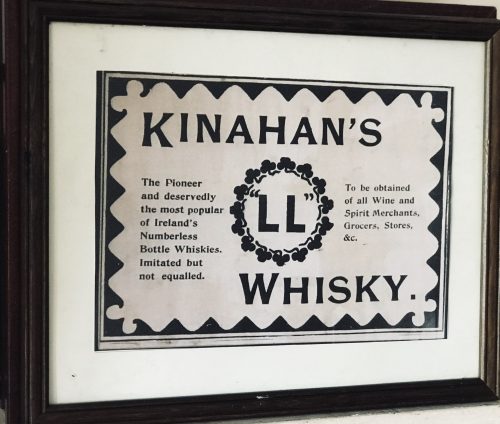



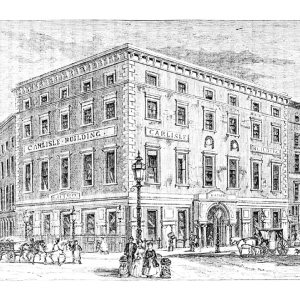

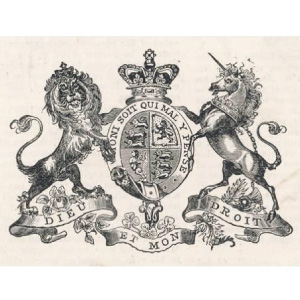

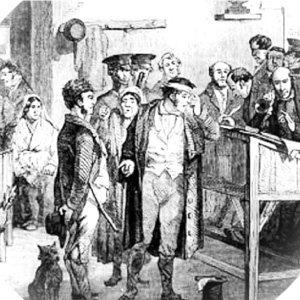








 By 1832, George Roe had inherited both of these plants which were near to each other. George continued their expansion and leased additional premises in Mount Brown, which were used as maltings, kilns, and warehouses.By 1827, output of the Thomas Street Distillery was reported as being 244,279 gallons. George Roe’s two sons, Henry and George, succeeded to the ownership in 1862, by which point the firm was large and prosperous, and the Roes a family of wealth and influence. So much so that in 1878, the Roes could afford to donate £250,000, a very large sum in those days, to the restoration of
By 1832, George Roe had inherited both of these plants which were near to each other. George continued their expansion and leased additional premises in Mount Brown, which were used as maltings, kilns, and warehouses.By 1827, output of the Thomas Street Distillery was reported as being 244,279 gallons. George Roe’s two sons, Henry and George, succeeded to the ownership in 1862, by which point the firm was large and prosperous, and the Roes a family of wealth and influence. So much so that in 1878, the Roes could afford to donate £250,000, a very large sum in those days, to the restoration of 




